How Big Are Low Carb Babies at Birth
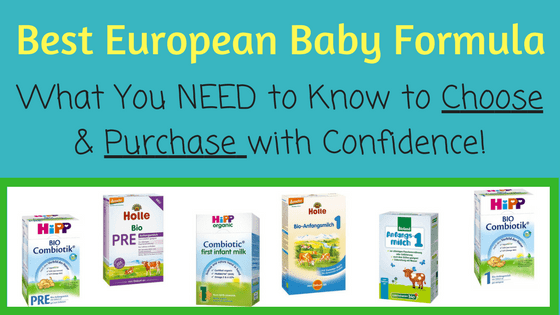
Baguettes from France are just better. The sausage (and beer!) from Deutschland kicks my supermarket'southward barrel. The pasta in Italian republic is far superior to the elbow noodles in my pantry. The port wine from Portugal … you get information technology…..
European Formula. Well-nigh people think of baby formula from Europe in the same way – that it's far superior to US formula. When I probe parents who desire this frequently-illusive European formula about why they prefer a European brand –the answers is usually some form of:
"It's better regulated" or "the ingredients are cleaner".
Both of these answers are true from a certain perspective. Simply honestly, it's real real hard to find articulate information most what makes European formula dissimilar from (or better than) Usa formula. There are lots of blogs that requite generic differences (similar packaging) and hitting on the organic issue. But no one seems to be discussing differences in regulatory guidelines or required ingredients or how to get is safely – pretty big issues!
Well, we are gonna crush that topic. In this article, I am going to:
- Break down the differences in regulations and practices betwixt the US and EU formulas.
- Cover the differences in nutrition requirements that could make a big divergence for your baby.
- What you demand to know earlier importing a European formula.
- Break downwards the differences between the 3 major brands of European formula: Holle, HiPP and Lebenswert.
Differences between U.s.a. and European Formula Industry:
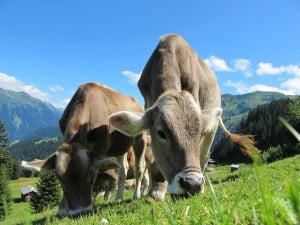 1) Farming Practices
1) Farming Practices
The short summary is: by and large speaking, the Eu farming practices are just better from an infant standpoint. The governing body of European formula regulation is the European Commission (equivalent to the FDA in the US). They require that in that location be no detectable levels of pesticide residues in any babe formula. This means that all European formulas are organic and then some! Well-nigh of the formulas are fabricated from milk cows living on a Demeter farm.
Demeter is like organic++. It means the farm is "biodynamic" – so no synthetic pesticides or fertilizers or GMO applied science. The farming practices are sustainable, and the cows graze and consume their natural food source, which is grass. This makes for some healthy and happy cows! Grass-fed cows produce milk that may take additional benefits to infants, compared to cows raised on corn (like most in the The states).
Sadly, in the U.s., we have organic formulas, and we have a grass-fed formula (Similac'southward Pure Elation). You can't become both organic and grass-fed. If you go with a European brand – you tin go both… which is pretty awesome.
Lastly, farms used to produce ingredients for European formulas go major points for sustainability. This really doesn't affect the nutrition the infant receives, just is worth mentioning since it is important to many families. Because many of the farms are biodynamic, they are also carbon-neutral, and you'll see that phrase on some European formula'south packaging. Secondly, a few of the companies go out of their style to learn palm oil from sustainable sources – which is unusual. None of the Usa companies exercise this.
 2) Goat Milk Formula Is A Thing!
2) Goat Milk Formula Is A Thing!
The European union is ahead of the The states on the caprine animal milk formula front. Goat'due south milk is fully approved as a base of operations for infant formula and widely available in the EU. I'll have an article coming out before long that will intermission down the regulations and options you have available if you lot are considering goat milk formula.
The chief brands are Holle (a High german company) and Nanny Care (a British company). If you lot want to get not bad learning more than nigh goat milk formula, hither is a video I made comparing goat milk poly peptide vs cow milk protein in formula. And here is an article comparing Holle vs Nanny Intendance vs Kabrita goat milk formulas.
3) European Formula Comes in Stages (This is BIG)
The EU handles formula totally differently than the FDA. In the US, the FDA regulates "Infant Formula" which is formula made for infants from birth – 12 months. The EU separates their formulas into 2 distinct stages:
- European "Infant Formula" is made for babies from birth to the commencement of solid foods (between 4 – 6 months). This is usually labeled Stage one.
- European "Follow on Formula" is for infants after solid foods accept been started (betwixt 4 – 6 months) until 1 twelvemonth. This is ordinarily labeled Stage 2.
The of import matter to know is that: if you choose a European Formula, information technology's pretty dang important to get the correct stage for your infant'south age ! The nutrition is much more tailored for specific age groups. This is quite dissimilar from The states formulas, where I consider the whole phase approach to be mostly marketing and not actually important.
Stage 3 European formulas are what we'd call "toddler formulas". I'm not going to cover those here since this article would exist considered a volume at that point.
Differences between U.s. and European Formula Regulations:
The European Commission regulates European formula, similar the FDA regulates United states of america formula. There are a lot of differences in the requirements and nutrients that yous need to know about before making a switch.
First (as only mentioned), Europe does formula in stages. Secondly, they also have some special requirements for partially hydrolyzed and fully hydrolyzed protein formulas, since these formulas have a different poly peptide base than simply straight moo-cow'southward milk proteins (1, 2). The FDA doesn't distinguish between types of formulas like this – there is just one set of requirements for all moo-cow'due south milk formulas – and these requirements are for any baby betwixt the ages of birth to 12 months (three).
At that place's lots of minor differences in the minimum and maximum ranges set for various vitamins and minerals. But, I'm just going to give y'all the major differences that differ between how US and European brands have called to attach to these guidelines (so basically, the differences that thing).
1) Fe
Plain Americans and Europeans have very different opinions on how much fe should go in baby formula (and how tight men's jeans should be… simply I digress). Here are the limits set past the two governing bodies:
- The FDA requires US baby formulas to have between 0.fifteen – 3.30 mg/100kcal iron.
- The European Commission requires European Infant Formula (babies 0 – 6 months) to have between 0.three – 1.3 mg/100kcal atomic number 26.
- The European Commission requires European Follow-On Formula (babies 6 – 12 months) to have between 0.6 – 1.vii mg/100kcal iron.
The Us range is just much larger than the European range. But here's where the real difference comes into play. US formulas all seem to follow the classic "more than is better" approach and add atomic number 26 closer to the upper finish of the range. For example, here are the iron concentrations in the major U.s.a. make formulas:
- Enfamil Newborn Enfamil Infant = 1.eight mg/100kcal
- Similac Accelerate (and Pro Advance) = i.9 mg/100kcal
- Gerber Gentle Stage 1 (0 – 12 months) = 1.5 mg/100kcal
- Gerber Gentle Phase two (6 – 12 months) = ii.0 mg/100kcal
Detect that all of these The states formulas have iron concentrations well higher up the maximum allowable concentrations set past the EU for babies of that age . This is one of the biggest differences betwixt the continents! Yous will manifestly notice different opinions on who is right and should hash out it with your pediatrician. But hither's what matters. If you are using a European formula, you really need to exist using a "follow-on" formula (phase 2) once your baby is between 4 – 6 months of age to be sure they are getting enough atomic number 26 in their diet. Focusing on iron-rich solid foods volition also aid! Information technology's a skilful conversation to have with your pediatrician who will know all of your unique baby's risk factors for potential fe deficiency.
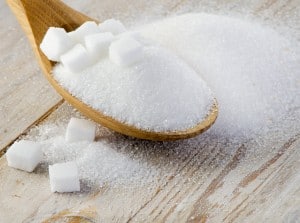 2) Carbohydrate and Lactose
2) Carbohydrate and Lactose
I exercise not like seeing sugar (or sucrose) in baby formula and have been talking about it for a while. I am happy to say that Europe agrees with me! European cow's milk formulas with intact proteins (which is most formulas) cannot have whatsoever sucrose at all! Formulas fabricated from hydrolyzed proteins are allowed to take a little sucrose, simply no more than 20%. PLUS the European Commission sets a minimum concentrations of lactose so that all formulas have to accept at least 30% carbohydrate from lactose. The FDA doesn't take whatsoever such requirements – regarding sucrose, or %lactose. Lots of the "sensitive" formulas in the United states of america would violate this %lactose rule, and Similac Sensitive and most U.s.a. soy formulas would also violate the sucrose dominion. So there's that ….
3) Other Ingredients
- The Europeans are a piffling more conservative with their additives than we are. They practise not permit any of the following additives to be used in European Formula: locust gum, guar glue, pectins, fructans (like inulin), and carrageenan. Carrageenan is unremarkably found in US ready-to-feed formulas.
- L-Carnitine is required in European infant formulas (so for 0-vi months) that are partially hydrolyzed. The US doesn't require it at all.
- Inositol is only required in European infant formulas (and then for 0-six months). It's not required in the follow-on formula. The Usa also requires it – and then it's in all formula in America.
- The EU recently passed new regulation that will require DHA be added to all infant and all follow-on formula to at least 20mg/100kcal (4)! Companies have until 2020 to make this change. The Usa doesn't require DHA at all – although most companies exercise add it. European formulas that practise add together DHA use some different sources than American companies (like fish oil). So, information technology will exist really exciting to see how the European formulas attach to these new requirements over the next few years.
- European formulas accept different "extras" than American formulas. In the US, you often come across carnitine, taurine or nucleotides added to formula. These are not found in any of the principal European cow's milk formulas (HiPP, Holle, or Lebenswert). However, it is mutual to see single amino acids added to European formulas, particularly phenylalanine, tryptophan, and tyrosine. None of these are required, but they are frequently added. I bespeak out which formulas add which amino acids in the brand breakdown below.
- European formulas take more soy-costless options. This is great for babies who are sensitive, and I wish the U.s.a. had more such options available for our babies.
What You Demand to Know Earlier Importing A European Formula:
1) Accurate Information is hard to come up by!
Well – obviously this commodity rocks 🙂 But, accurate lists of ingredients are difficult to find! I often have to rely on third political party websites to discover ingredients, or try to translate strange labels into English. None of this is ideal! It's important to know that what yous go is what you call back yous are getting! A expert supplier will assistance with this (more on that below). Too, the EU recently passed regulation that volition require more foreigner-friendly labeling for us American parents since there has been so much exporting of European formula over the concluding few years. This is awesome! Merely, it does non have to be enforced until 2020. So until then, you have to do your own homework.

2) All Countries in Europe Are Not The Same
HiPP formula has manufacturers in iii different countries: The United Kingdom, Deutschland, and Holland. All brand HiPP Stage ane and Stage 2 formulas. While they are similar – they are not the same!!! HiPP Stage 1 from the Netherlands & Deutschland has a probiotic while Britain HiPP Stage does not. The Dutch HiPP is soy-complimentary whereas the German and UK HiPP are not.
And then, it'south important that yous know which specific state you would like to guild. And information technology's every bit important to utilize a supplier that will not just lump all HiPP formula together and allow you to specify the blazon you desire. Otherwise, your babe could end up going through many inadvertent formula switches, which can be stressful!
three) Pediatrician comfort
Some The states pediatricians are just uncomfortable using European formula. This is for a variety of reasons. The biggest is: European formulas adhere to Eu standards and are approved in Europe – so they practise non go through the FDA vetting procedure and are thus NOT FDA approved "baby formulas" in the US. Your relationship with your pediatrician is sacred! You guys need to be a tight team. So be sure to have the discussion with your pediatrician. Show them this article if helpful! But but be sure you are using a formula that you are all comfy with.
What To Look For in A European Formula Supplier:
 So, you've made the decision to use a European Formula. Now you've got to go about the terrifying chore of ordering it over the cyberspace. There are lots of suppliers online. There are also a lot of horror stories online nearly iv-week aircraft times, orders that were never filled, and damaged packaging arriving. This is scary because it'southward your baby nosotros're talking virtually! And so here are the things to look for in a formula supplier/vendor to feel comfortable getting started.
So, you've made the decision to use a European Formula. Now you've got to go about the terrifying chore of ordering it over the cyberspace. There are lots of suppliers online. There are also a lot of horror stories online nearly iv-week aircraft times, orders that were never filled, and damaged packaging arriving. This is scary because it'southward your baby nosotros're talking virtually! And so here are the things to look for in a formula supplier/vendor to feel comfortable getting started.
- Supply Chain – Look for a company with a proficient supply concatenation. This means that they have established relationships with European suppliers and then they have consequent inventory coming into the states in a timely manner.
- Simply import via air – Look for a supplier that just imports formula via air freight (and non shipping across the bounding main). This ensures the formula arrives faster and is not subject to potentially high heat/humidity levels on a cross-Atlantic ship.
- Local Inventory – Look for a supplier that stores formula in a temperature controlled US warehouse – so information technology is shipped to y'all from somewhere in the US (not directly from overseas). This way, y'all don't stop upwards with an unanticipated 3-week shipping fourth dimension. Also local inventory will be kept updated, so if something is out of stock, you volition know right away and not learn about a backorder ii weeks afterward placing your club.
- Variety of options – Expect for a supplier that specifically states which country HiPP they are selling so you don't stop up with formulas manufactured in different countries.
- Skillful customer reviews always help!
I have been approached by quite a few European Formula Sellers, and vetted them all. Also, recently 2 of the biggest European Formula suppliers take been shut down (eek!). These a few that are yet allowed to sell formula, that I like, and that met all the above criteria (according to them):
- Bottles and Burps
- My Organic Visitor
European Formula Brand Breakdown:
Nosotros're finally here! Now that you have all the background, nosotros can actually talk virtually the differences between the major European make offerings: HiPP, Holle, Lebenswert and new-kid-on-the-block, Loulouka.
The chart beneath does not include HiPP'southward partially hydrolyzed (Comfort) and hypoallergenic (HA) formulas. I'll be roofing those in an upcoming article.
| Formula | Poly peptide | Carb | Fat | Extras | Amino Acids | Atomic number 26* | Notes |
|---|---|---|---|---|---|---|---|
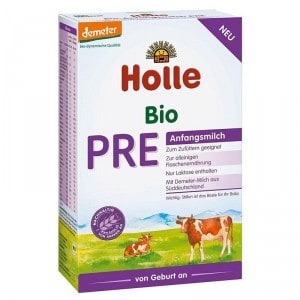 Holle PRE Holle PRE | Whole Milk, Whey, Skim Milk | Lactose | Cream, Palm oil, Rapeseed oil, Sunflower oil | None | None | 0.5 | Organic, Demeter & Carbon Neutral |
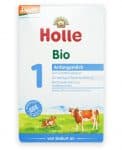 Holle – ane Holle – ane | Skim Milk, Whey | Lactose, Maltodextrin | Palm, Rapeseed, Sunflower oils | None | None | 0.6 | Organic, Demeter & Carbon Neutral |
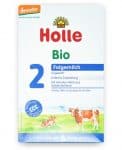 Holle – 2 Holle – 2 | Skim Milk, Whey | Lactose, Maltodextrin, Starch | Palm, Rapeseed, Sunflower oils | None | None | 0.9 | Organic, Demeter & Carbon Neutral |
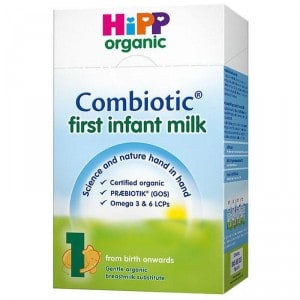 HiPP – 1 (United kingdom of great britain and northern ireland) HiPP – 1 (United kingdom of great britain and northern ireland) | skimmed milk, whey powder (60/40 whey/casein ratio) | Lactose | Palm, Rapeseed, Sunflower oils | GOS (prebiotic) | L-tyrosine, L-phenylalanine, L-tryptophan | 0.5 | Organic |
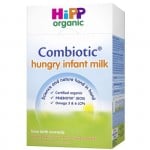 HiPP – 1 Hungry (Uk) HiPP – 1 Hungry (Uk) | skimmed milk (80/20 whey/casein ratio) | Lactose | Palm, Rapeseed, Sunflower oils | GOS (prebiotic) | Fifty-cysteine, L-tryptophan | 0.vii | Organic, Soy-Costless |
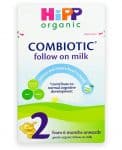 HiPP – ii (UK) HiPP – ii (UK) | skimmed milk, whey powder | Lactose | Palm, Rapeseed, Sunflower oils | GOS (prebiotic) | Fifty-tryptophan | 1.0 | Organic, Soy-Free |
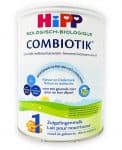 HiPP – 1 (Dutch) HiPP – 1 (Dutch) | skimmed milk, whey powder | Lactose | Palm, Rapeseed, Sunflower oils | GOS (prebiotic), Fifty. Fermentum (probiotic) | L-tyrosine, L-phenylalanine, 50-tryptophan | 0.5 | Organic, Soy-Free |
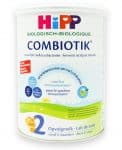 HiPP – ii (Dutch) HiPP – ii (Dutch) | skimmed milk, whey powder | Lactose | Palm, Rapeseed, Sunflower oils | GOS (prebiotic), L. Fermentum (probiotic) | Fifty-tryptophan | 1.0 | Organic, Soy-Free |
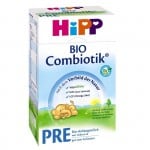 HiPP PRE – (High german) HiPP PRE – (High german) | Skim Milk, Whey Product, Whey Protein | Lactose | Palm, Rapeseed, Sunflower oils | GOS (prebiotic), L. Fermentum (probiotic) | Fifty-phenylalanine, L-tryptophan | 0.5 | Organic, Soy-Complimentary |
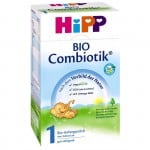 HiPP – 1 (German) HiPP – 1 (German) | Skim Milk, Whey | Lactose | Palm, Rapeseed, Sunflower oils | GOS (prebiotic) L. Fermentum (probiotic) | 50-tyrosine, L-phenylalanine, L-tryptophan | 0.5 | Organic |
 HiPP – 2 (German language) HiPP – 2 (German language) | Skim Milk, Whey | Lactose, Starch | Palm, Rapeseed, Sunflower oils | GOS (prebiotic) 50. Fermentum (probiotic) | L-tryptophan | 1.0 | Organic |
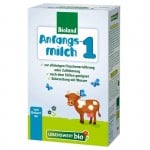 Lebenswert – 1 Lebenswert – 1 | Skim Milk, Whey | Lactose | Palm, Rapeseed, Sunflower oils | None | None | 0.vii | Organic, Soy-Free |
 Lebenswert – 2 Lebenswert – 2 | Skim Milk, Whey | Lactose, Maltodextrin | Palm, Rapeseed, Sunflower oils | None | None | 0.9 | Organic, Soy-Free |
 Loulouka – 1 Loulouka – 1 | Skim Milk, Whey (60/40 whey/casein ratio) | Lactose | Sunflower, Coconut, Rapeseed, oils | None | None | 1.two | Organic, Soy-Free |
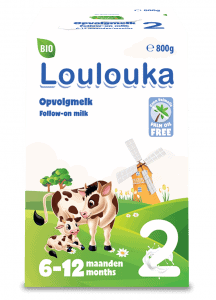 Loulouka – ii Loulouka – ii | Skim Milk, Whey | Lactose, Maltodextrin | Sunflower, Kokosnoot, Rapeseed, oils | None | None | 1.5 | Organic, Soy-Free |
 Kendamil – ane Kendamil – ane | Whole Milk, Whey (60/forty whey/casein ratio) | Lactose | Milk fat, Sunflower, Coconut, Rapeseed, oils | GOS (prebiotic) | None | 1.one | Organic, Soy-Free |
| Kendamil – 2 | Whole Milk, Whey (50/50 whey/casein ratio) | Lactose | Milk fat, Sunflower, Coconut, Rapeseed, oils | GOS (prebiotic) | None | 1.2 | Organic, Soy-Free |
Y'all are amazing for making it this far! I know it's so difficult choosing the right formula for your precious babe! You should feel really skilful nigh everything y'all but learned that will help y'all make the perfect option.
If yous're using a European formula, I'd honey to know which one, and how it's working for you lot!
Happy digesting to the tiny tummies in your firm,
xo Dr. Immature
References:
- European Food Safety Authority (EFSA) Console on Dietetic Products, Diet and Allergies (NDA). Scientific Opinion on the Essential Composition of Infant and Follow-on Formulae. EFSA Journal 2014; 12(7): 3760.
- European Commission; Health and Consumer Protection Directorate – Full general. Scientific Committee on Food. Report of the Scientific Commission on Food on the Revision of Essential Requirements of Infant Formulae and Follow-on Formulae. 2003: AXFR/CS/NUT/IF/65 Final. Brussels, Belgium.
- US Food and Drug Administration. Title 21 – Food and Drugs, Affiliate I – Nutrient and Drug Assistants Department of Wellness and Human Services, Subchapter B – Food for Human Consumption, Part 107 – Infant Formula. Code of Federal Regulations. Title 21 (2): April i, 2017.
- The European Commission. Commission Delegated Regulation (Eu) 2016/127. September 25, 2015.
Source: https://babyformulaexpert.com/european-formula/
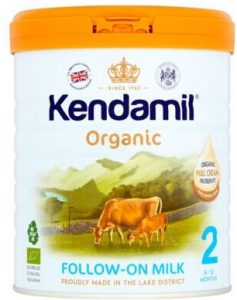
0 Response to "How Big Are Low Carb Babies at Birth"
Post a Comment